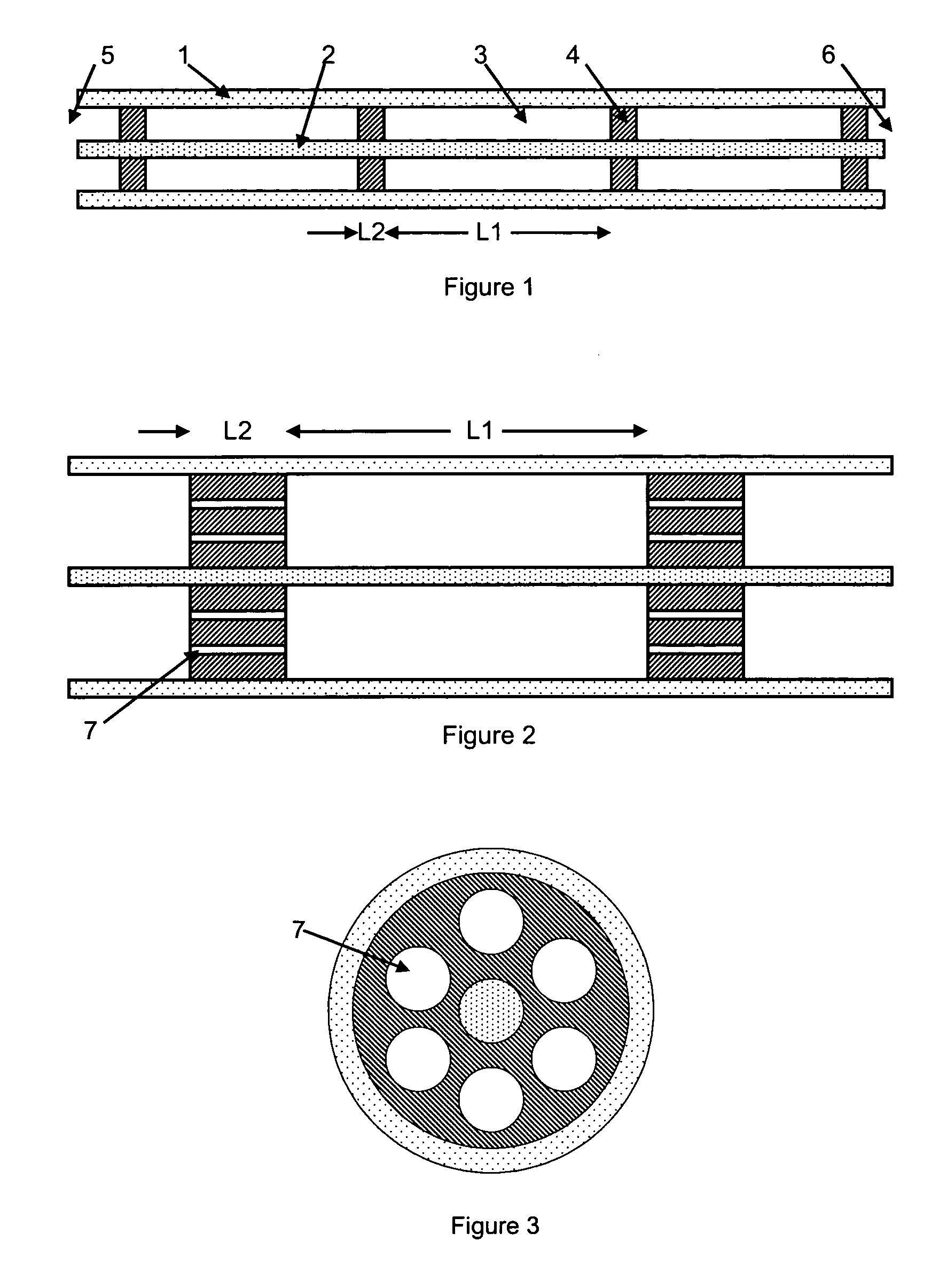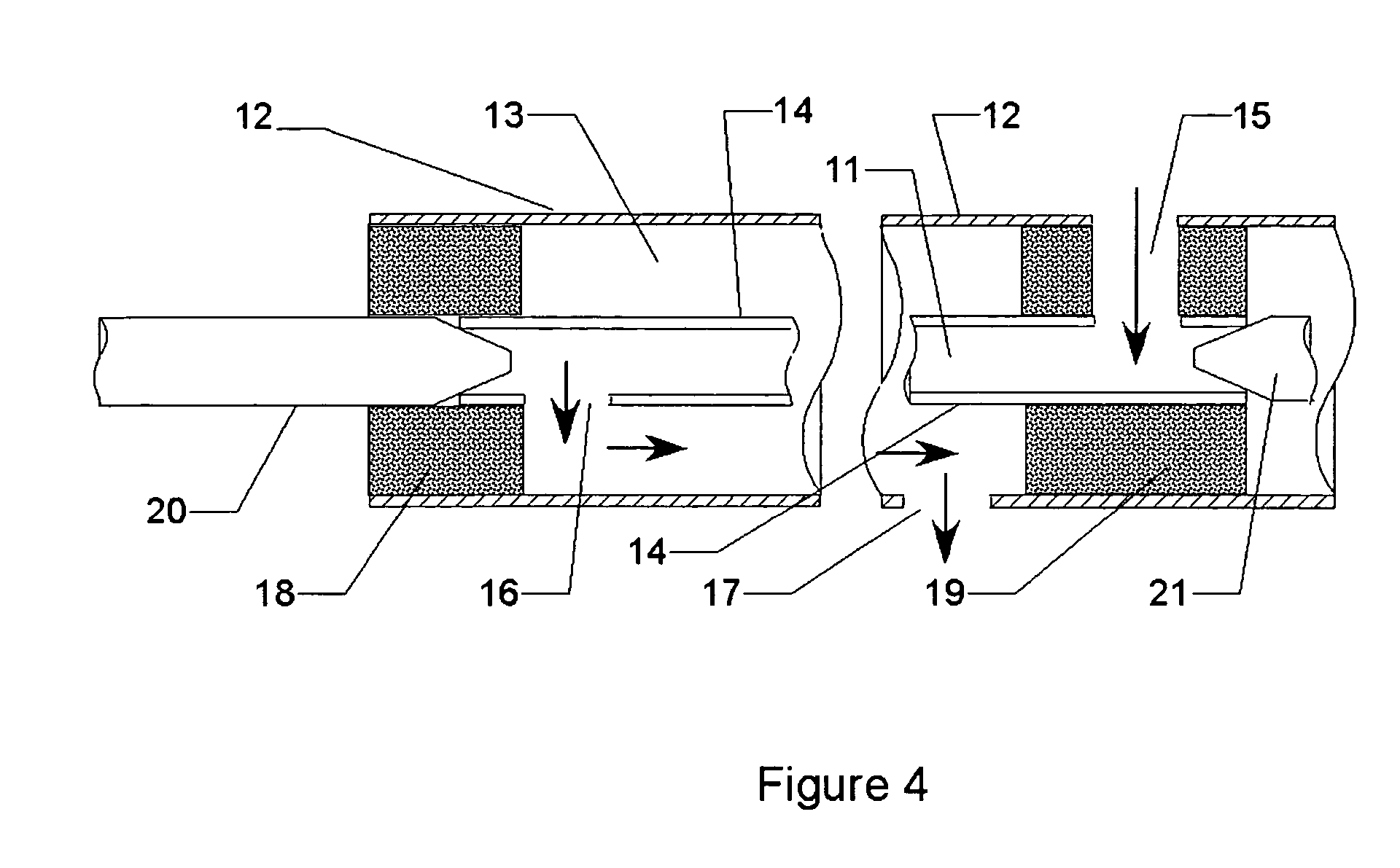Air-core microwave ablation antennas
a microwave ablation and air core technology, applied in the field of tissue resection, coagulation and hemostasis, and tissue delivery of microwave energy, can solve the problems of unfavorable patient safety, unwanted tissue necrosis, and heat generation, and achieve the effect of large power, without increasing the diameter of the feeding cable or the antenna
- Summary
- Abstract
- Description
- Claims
- Application Information
AI Technical Summary
Benefits of technology
Problems solved by technology
Method used
Image
Examples
Embodiment Construction
)
[0019] While the invention is susceptible of embodiment in many different forms, there is shown in the drawings and will be described herein in detail one or more embodiments of the present disclosure. It should be understood, however, that the present disclosure is to be considered an exemplification of the principles of the invention, and the embodiment(s) illustrated is / are not intended to limit the spirit and scope of the invention and / or the claims herein.
[0020] With reference to the drawings, the co-axial cable of the preferred embodiment of the present disclosure is shown. It should be understood that the cable can be of any suitable length, and the drawings figures are not intended to limit the length of the cable to the specific length illustrated or any specific length. Instead, it should be understood that only a representative portion or section of cable is illustrated.
[0021]FIG. 1 illustrates a semi-rigid coaxial cable, preferably constructed of copper or silver, uti...
PUM
 Login to View More
Login to View More Abstract
Description
Claims
Application Information
 Login to View More
Login to View More - R&D
- Intellectual Property
- Life Sciences
- Materials
- Tech Scout
- Unparalleled Data Quality
- Higher Quality Content
- 60% Fewer Hallucinations
Browse by: Latest US Patents, China's latest patents, Technical Efficacy Thesaurus, Application Domain, Technology Topic, Popular Technical Reports.
© 2025 PatSnap. All rights reserved.Legal|Privacy policy|Modern Slavery Act Transparency Statement|Sitemap|About US| Contact US: help@patsnap.com



